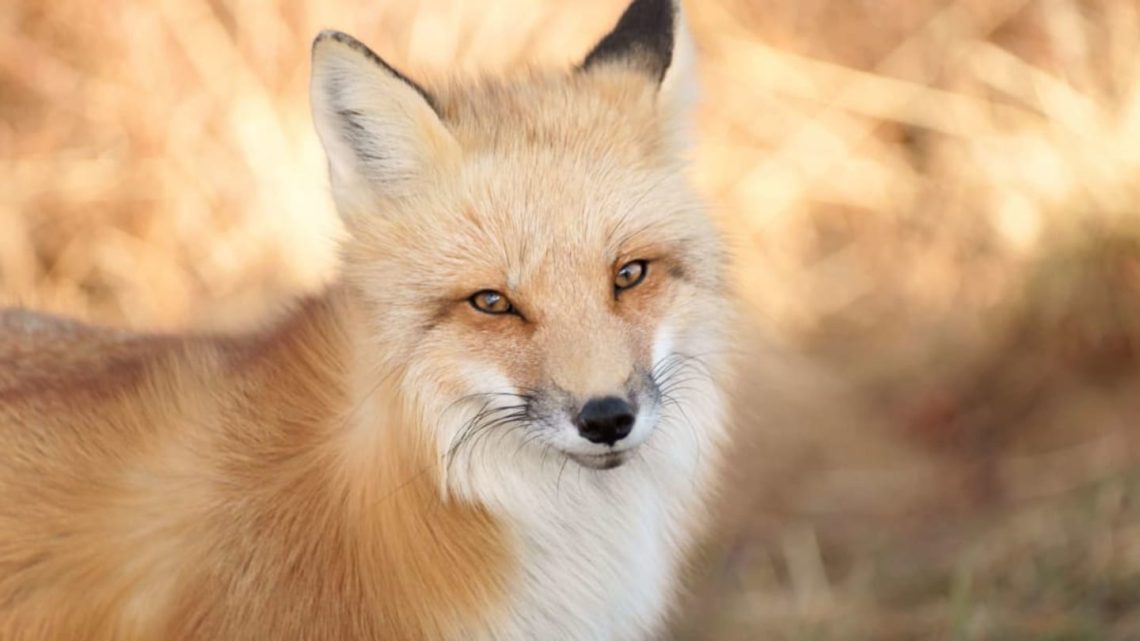
10 interesting facts about foxes – incredibly smart and cunning animals
The fox is the most common animal at first glance. They occupied almost all natural areas. They can easily be found in forests, steppes, mountains and deserts. They are considered very beautiful; it is not without reason that poems, fairy tales and paintings are dedicated to them.
This beast often appears in our folk tales. There, foxes are always presented as cunning, smart and resourceful. They can be both positive and negative characters.
In stories, they are ready to deceive, to benefit at any cost, or to help a fellow. But how true is this? What does modern man really know about these animals?
In this article, we will look at 10 interesting facts about foxes.
Contents
- 10 There are 10 types of foxes
- 9. 3 species live in Russia
- 8. The smallest variety is Fenech
- 7. The tail helps to keep warm in winter and maintain balance.
- 6. solitary animal
- 5. Throws hedgehogs into the water to open them up
- 4. A curious way to deal with fleas
- 3. Covers tracks professionally
- 2. Much in common with domestic cats
- 1. “Fire Demons” in Ancient China
10 There are 10 types of foxes
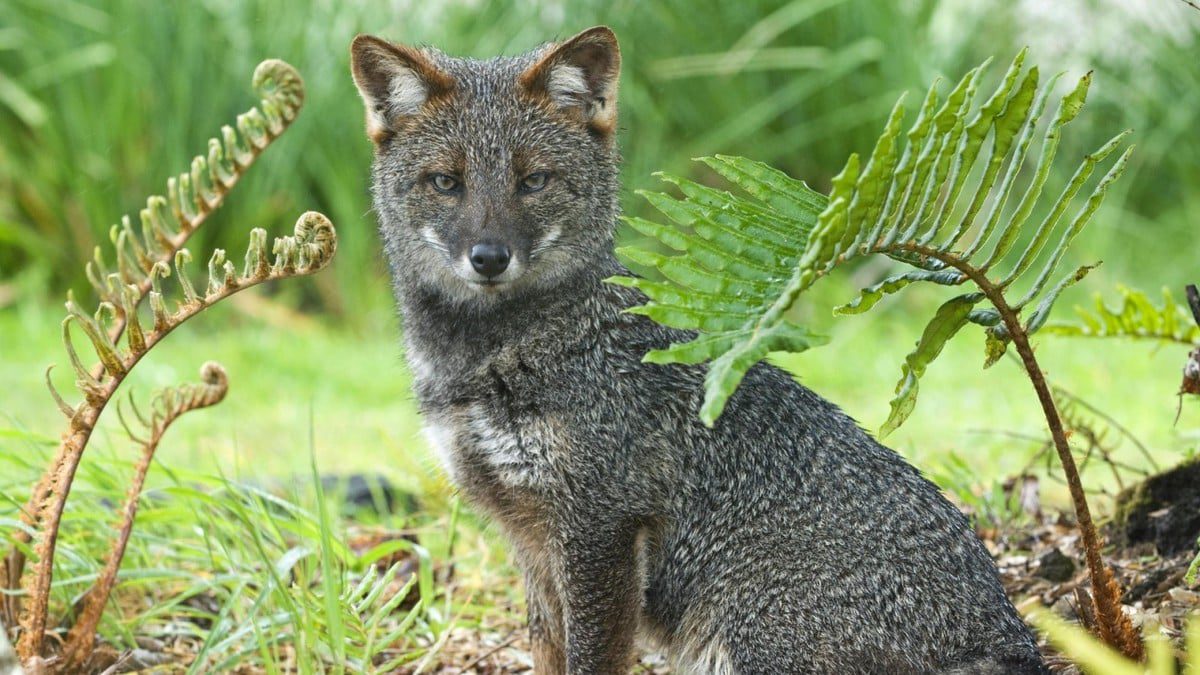 “Fox” is the common name of the genus. Currently 10 species belong to this subfamily of wolves. There is no clear structure in the classification, some types are excluded, some are added.
“Fox” is the common name of the genus. Currently 10 species belong to this subfamily of wolves. There is no clear structure in the classification, some types are excluded, some are added.
So, for example, the arctic fox and the arctic fox are in question. Officially, they are not included in any genus, they stand separately, because scientists have not yet come to an unambiguous decision.
Interesting fact: the maned wolf, which, due to its appearance, should be involved in this genus, does not at all belong to the foxes. It is a relic species that survived the extinction of much of its environment.
9. 3 species live in Russia
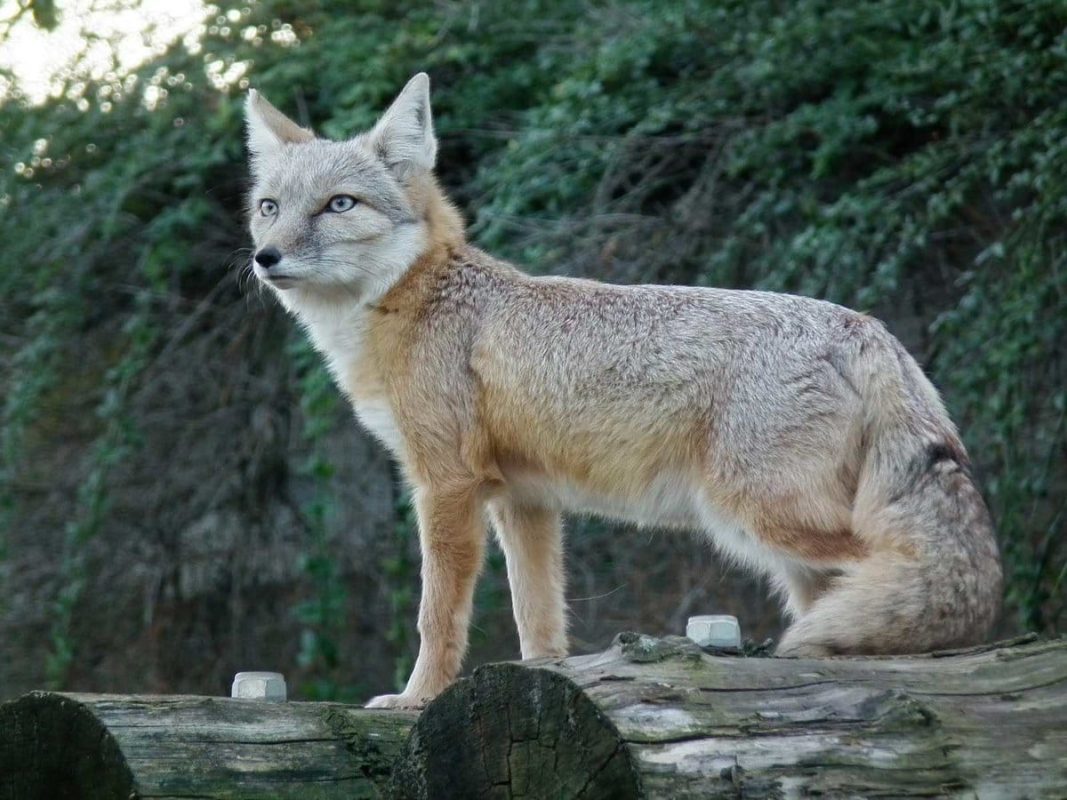 Despite the wide variety of species, only three. The first and most common is the common fox. This includes about 50 more subspecies, but these are subtleties. It looks like it is presented in fairy tales: wool of all shades of red, white tip of the tail, from below it is either black or white.
Despite the wide variety of species, only three. The first and most common is the common fox. This includes about 50 more subspecies, but these are subtleties. It looks like it is presented in fairy tales: wool of all shades of red, white tip of the tail, from below it is either black or white.
The second type is the corsac. It can be found in the South-East of the country. It looks like an ordinary fox, only smaller in size. Usually his coat is brown-gray, and the main difference from others is very wide and noticeable cheekbones.
The Arctic fox is considered the third species, although there is still no exact solution for it. They live in the polar zone, so they have amazing resistance to cold.
8. The smallest variety is Fenech
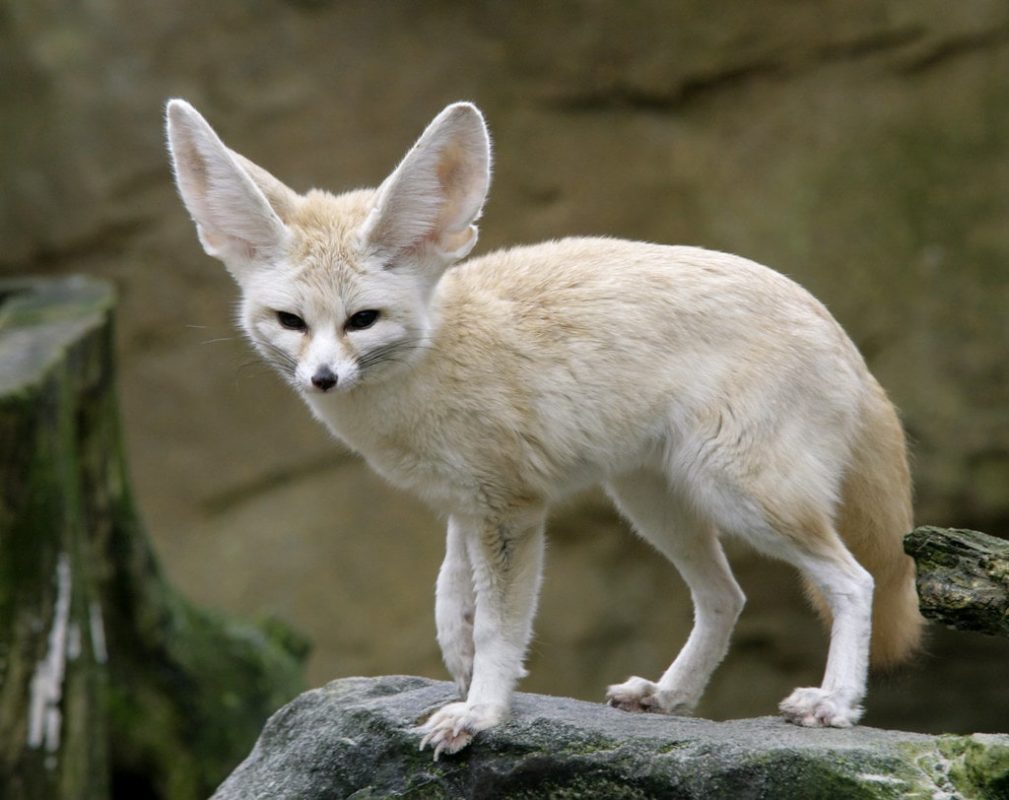 This species is considered the smallest among all foxes.. The size of the body does not exceed 40 centimeters, although if measured with the tail, it can be all 80 centimeters.
This species is considered the smallest among all foxes.. The size of the body does not exceed 40 centimeters, although if measured with the tail, it can be all 80 centimeters.
Fenech lives in the desert, in a dry and hot area. They learned how to live well in northern Africa. So, for example, their paws are covered with very thick fur, so they simply do not feel the hot sand of deserts and semi-deserts. They have very large ears, which makes them seem cute, but not predatory.
However, it is not only to hear any movement in the sand. Large ears promote blood circulation in the body, so the fennec fox can cool faster. They named this species because “fan” translated from Arabic means “Fox”.
7. The tail helps to keep warm in winter and maintain balance.
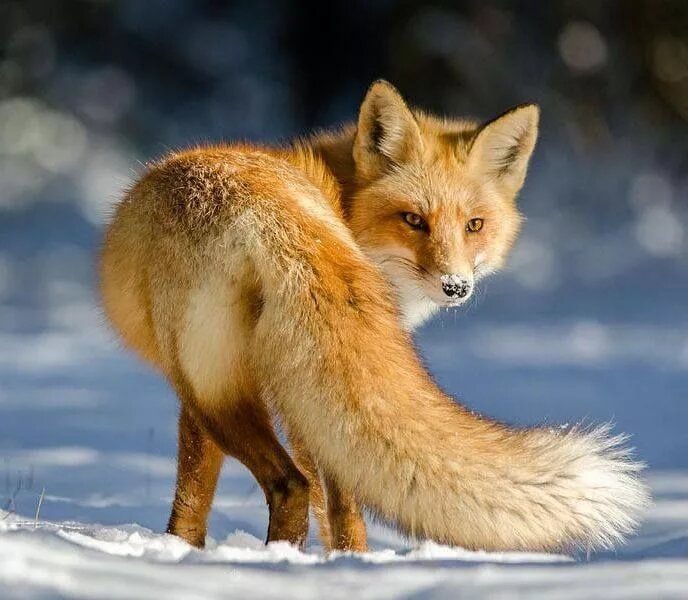 The tail for the fox is not only a matter of pride. It has a very important function – it helps the beast to survive.
The tail for the fox is not only a matter of pride. It has a very important function – it helps the beast to survive.
When running fast, when foxes develop great speed, it serves as a kind of balance and helps not to lose balance..
In addition, with its help, this cunning animal can turn very quickly. When chasing and threatening their lives, they simply sharply turn it around at a right angle, and due to this, they quickly turn around themselves. In the tail, supplies can be stored for the worst case of famine. Animals cover themselves and their cubs with them in the cold.
Interesting fact: fox tail smells like violets! There is a gland that produces a floral aroma. Therefore, the expression “cover up traces” takes on a slightly different meaning, foxes also hide not only paw prints on the ground, but also hide their smell.
6. solitary animal
 Foxes usually live alone.. They form pairs for one season during the mating season. They produce and then train the offspring together, in order to then scatter. The rest of the year they hunt and survive alone.
Foxes usually live alone.. They form pairs for one season during the mating season. They produce and then train the offspring together, in order to then scatter. The rest of the year they hunt and survive alone.
The only exceptions are corsacs and fennies. The former form permanent pairs and no longer change their partners. And the second live in communities permanently. Usually such “packs” consist of more than ten individuals.
5. Throws hedgehogs into the water to open them up
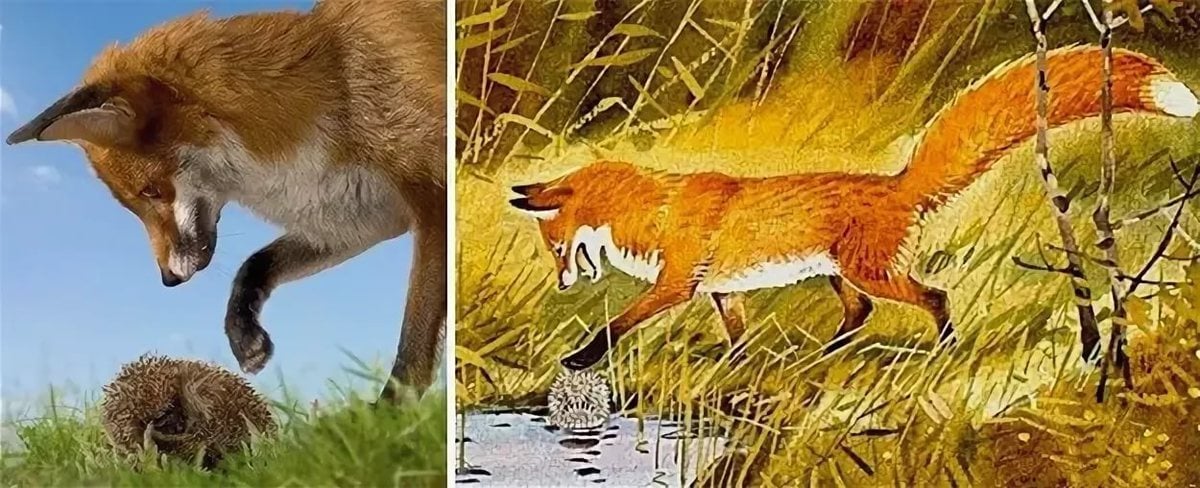 The fox is indeed distinguished by cunning and ingenuity. There are not many animals in nature who are a danger to hedgehogs. However, foxes cope with the obstacle in the form of needles. They thought of throwing hedgehogs into the water.
The fox is indeed distinguished by cunning and ingenuity. There are not many animals in nature who are a danger to hedgehogs. However, foxes cope with the obstacle in the form of needles. They thought of throwing hedgehogs into the water.
As soon as the cunning one finds her future dinner, she begins to roll it to the nearest reservoir. There, the hedgehog opens up on instincts, the needles get wet, and nothing else can prevent the fox from having a bite.
However, there is an opinion that hedgehogs smell very bad, so foxes eat them only in case of hunger.
4. A curious way to deal with fleas
 Foxes, just like other animals, suffer from fleas. Only now these cunning creatures have learned how to deal with them. They take hay in their teeth, and then go to the nearest body of water. There, backing away, they gradually sink into the water.
Foxes, just like other animals, suffer from fleas. Only now these cunning creatures have learned how to deal with them. They take hay in their teeth, and then go to the nearest body of water. There, backing away, they gradually sink into the water.
Fleas run to drier places, eventually end up on the hay that the fox holds in its teeth. When most of the fleas leave the animal alone, the fox simply throws hay into the water, and then calmly leaves.
While dogs prefer to bite small insects one at a time, foxes have found a way to get rid of almost all at once.
3. Covers tracks professionally
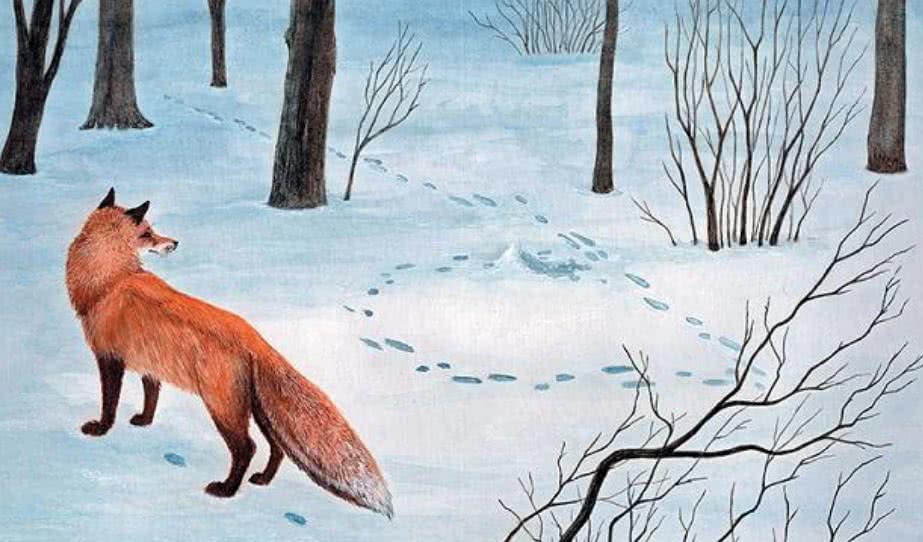 And here is another proof of the trick. For as long as this species has existed, foxes have learned to perfectly save their lives, get away from the chase, and confuse the tracks. This is one of the most essential skills for survival.
And here is another proof of the trick. For as long as this species has existed, foxes have learned to perfectly save their lives, get away from the chase, and confuse the tracks. This is one of the most essential skills for survival.
When a fox is chased, it switches from the usual leisurely trot to a faster run. It often moves in great rapid leaps so that no footprints are left on the ground. It knocks down the hunters.
Constant changes in direction, sharp turns and unexpected decisions – all this perfectly describes the smart beast while saving his life..
2. Much in common with domestic cats
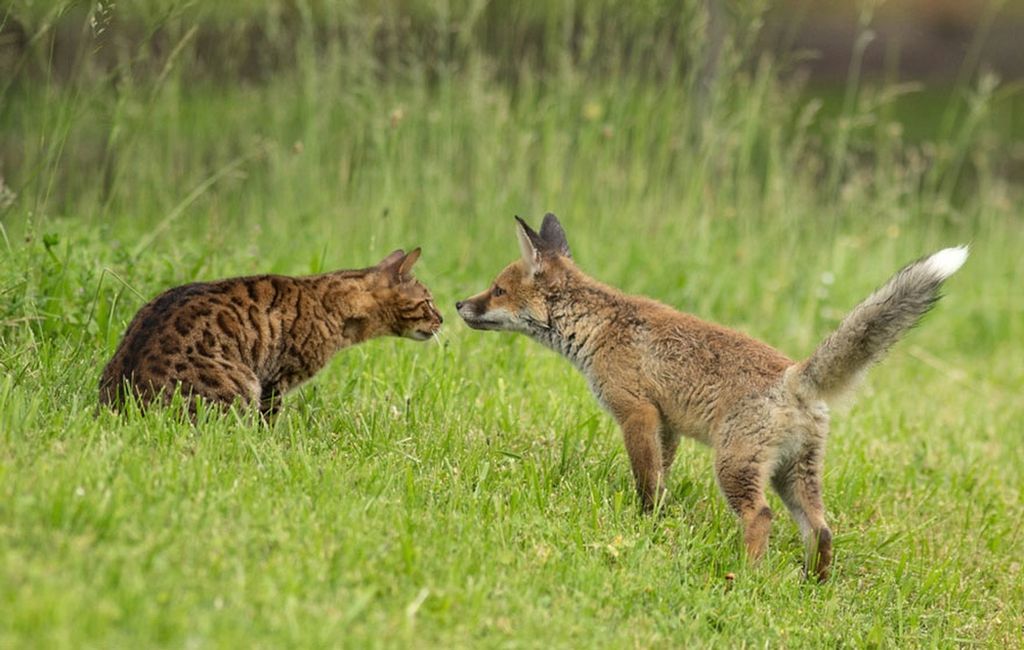 Recently, a wide variety of pets have been appearing in people’s homes more and more often. Chanterelles were no exception. They are very similar to domestic cats in their behavior..
Recently, a wide variety of pets have been appearing in people’s homes more and more often. Chanterelles were no exception. They are very similar to domestic cats in their behavior..
They must be educated, otherwise the animal can harm not only the furniture, but also the owner. However, they are easy to train. Themselves at home are very friendly.
They will play with their owners just like cats. But do not forget that, since the animal is wild by nature, it must be provided with certain care.
1. “Fire Demons” in Ancient China
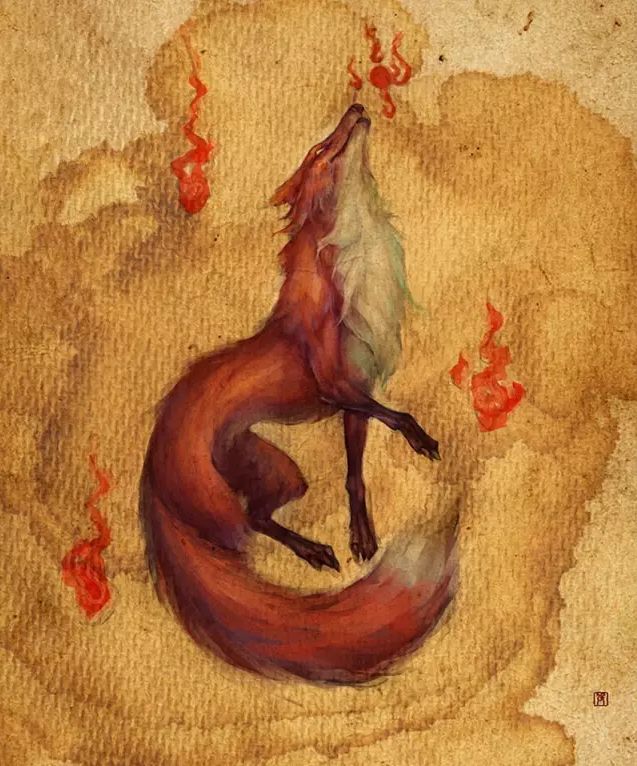 Previously, foxes suffered greatly from the beliefs of people. They have a special place in Chinese mythology. They represented this animal as a bad omen.
Previously, foxes suffered greatly from the beliefs of people. They have a special place in Chinese mythology. They represented this animal as a bad omen.
It was a creature associated with evil spirits. It was believed that fire was contained in its tail. As soon as the beast hits them on the ground, everything around will flare up. People believed that he could take the form of any person for the sole purpose of fooling them.
But not only in China they were revered as “demons of fire.” The same fame was for foxes in ancient Rome. Here the beast was also associated with treachery and deceit.
At the festival in the name of the goddess Cecera, the Romans tied a burning torch to the tail of the foxes and forced them to run around the fields, considering this “ritual” to be protection from a fire in the fields.





